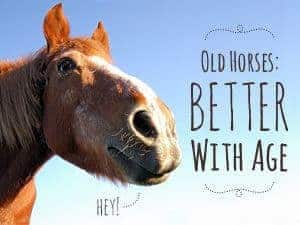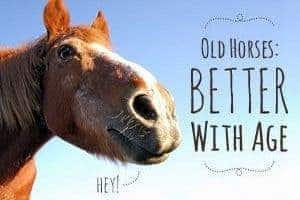Managing a Missing Tooth
- Topics: Old Horses: Better With Age
During my time caring for a herd of mainly senior horses, we encountered dental problems on a regular basis. Several horses required softer senior feed (a few of those needed “Senior Soup,” a mixture of senior feed and water), some required frequent dental exams and maintenance, and one mare in particular had a single missing tooth that caused a surprisingly large amount of problems.
No one is quite sure how Chessy lost her molar. It hadn’t been pulled and the rest of her mouth remained in decent health for a horse in her mid-20s. She wasn’t skinny, either; in fact, she held a very healthy weight, if not marginally overweight. She could consume hay and regular pelleted concentrate with no problem, even with her missing tooth. Grass, however, gave her problems.
Every morning, Chessy would come in with a giant wad of chewed grass tucked outside her teeth in her left cheek. You could see a large bulge on the side of her face near where the hind molars end. We cleaned all the grass out each day, but without fail she’d come in with a new wad each morning. The good old girl stood patiently to have her mouth cleaned and we thanked her for this on a regular basis! I can’t even imagine working on a noncompliant horse in this scenario…I’d envision it being a daily nightmare.
We had a veterinarian out to look her mouth and guide us towards the best option. Since Chessy’s mouth was in otherwise good health, we removed the debris from her mouth on a very regular basis, and extensive dental work would have stretched our nonprofit organization financially, the veterinarian recommended continuing on as we had. She suggested cleaning the mouth out again before Chessy went outside for the night in addition to when she came in each morning, and she also recommended flushing the mare’s mouth out with water after each cleaning to remove any debris left behind
Create a free account with TheHorse.com to view this content.
TheHorse.com is home to thousands of free articles about horse health care. In order to access some of our exclusive free content, you must be signed into TheHorse.com.
Start your free account today!
Already have an account?
and continue reading.

Written by:
Erica Larson
Related Articles
Stay on top of the most recent Horse Health news with













